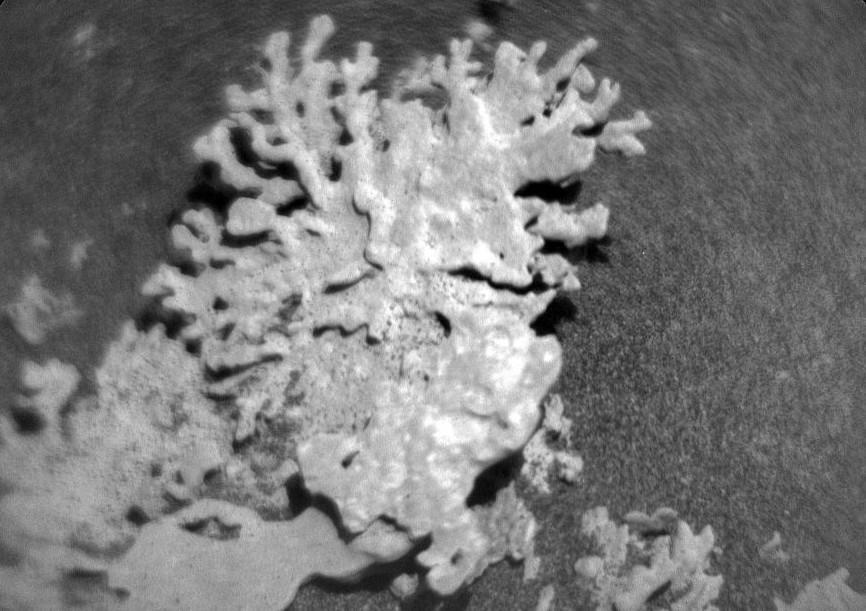
Coral-shaped rock spotted on Mars, NASA shares pic
NASA’s Curiosity Mars rover has made yet another fascinating discovery on the Martian surface. Recently, the rover sent back black and white images of a rock that bears an uncanny resemblance to a piece of coral. The remarkable find was made in the Gale Crater, a large impact basin on Mars that has been a hub of scientific interest for years.
According to NASA, the recently discovered coral-like rock is believed to be around a billion years old. This age is significant, as it dates back to a time when Mars was much more hospitable to life. The discovery of this rock has sparked excitement among scientists, who are eager to learn more about the geological history of the Red Planet.
The image of the coral-shaped rock was captured by the Curiosity rover’s ChemCam, a laser-induced breakdown spectroscopy (LIBS) instrument that helps scientists analyze the chemical composition of Martian rocks. The ChemCam uses a high-powered laser to vaporize the rock’s surface, and then analyzes the resulting plasma to determine the chemical makeup of the rock.
The coral-shaped rock is a striking example of the geological wonders that can be found on Mars. The rock’s unique shape is likely the result of a combination of geological processes, including erosion and sedimentation. NASA scientists believe that the rock may have formed through the interaction of water and minerals, which is a crucial clue in understanding the history of water on Mars.
The Gale Crater, where the coral-shaped rock was found, is a vast impact basin that was formed around 3.5 billion years ago. The crater is about 96 miles (154 kilometers) in diameter and is believed to have been created by a massive asteroid impact. Over time, the crater has been filled with sediment and rocks, which have been shaped by millions of years of erosion.
The discovery of the coral-shaped rock is significant not only because of its unique shape, but also because it provides evidence of the geological processes that have shaped Mars over billions of years. The rock is a testament to the dynamic and ever-changing nature of the Martian surface, which is a crucial clue in understanding the planet’s history.
The Curiosity rover has been exploring the Gale Crater since 2012, and has made numerous significant discoveries about the Martian geology and environment. The rover is equipped with a range of instruments, including cameras, spectrometers, and drills, which allow scientists to study the Martian surface in unprecedented detail.
NASA’s Curiosity Mars rover is a testament to the incredible advances that have been made in space exploration in recent years. The rover is a marvel of engineering, and its ability to explore the Martian surface has provided scientists with a wealth of new information about the Red Planet.
In conclusion, the discovery of the coral-shaped rock on Mars is a significant finding that provides new insights into the geological history of the planet. The rock’s unique shape and composition are a testament to the dynamic and ever-changing nature of the Martian surface, and are an exciting reminder of the many wonders that await us on the Red Planet.
Source: https://www.jpl.nasa.gov/images/pia26634-curiositys-chemcam-views-a-rock-shaped-like-coral/






